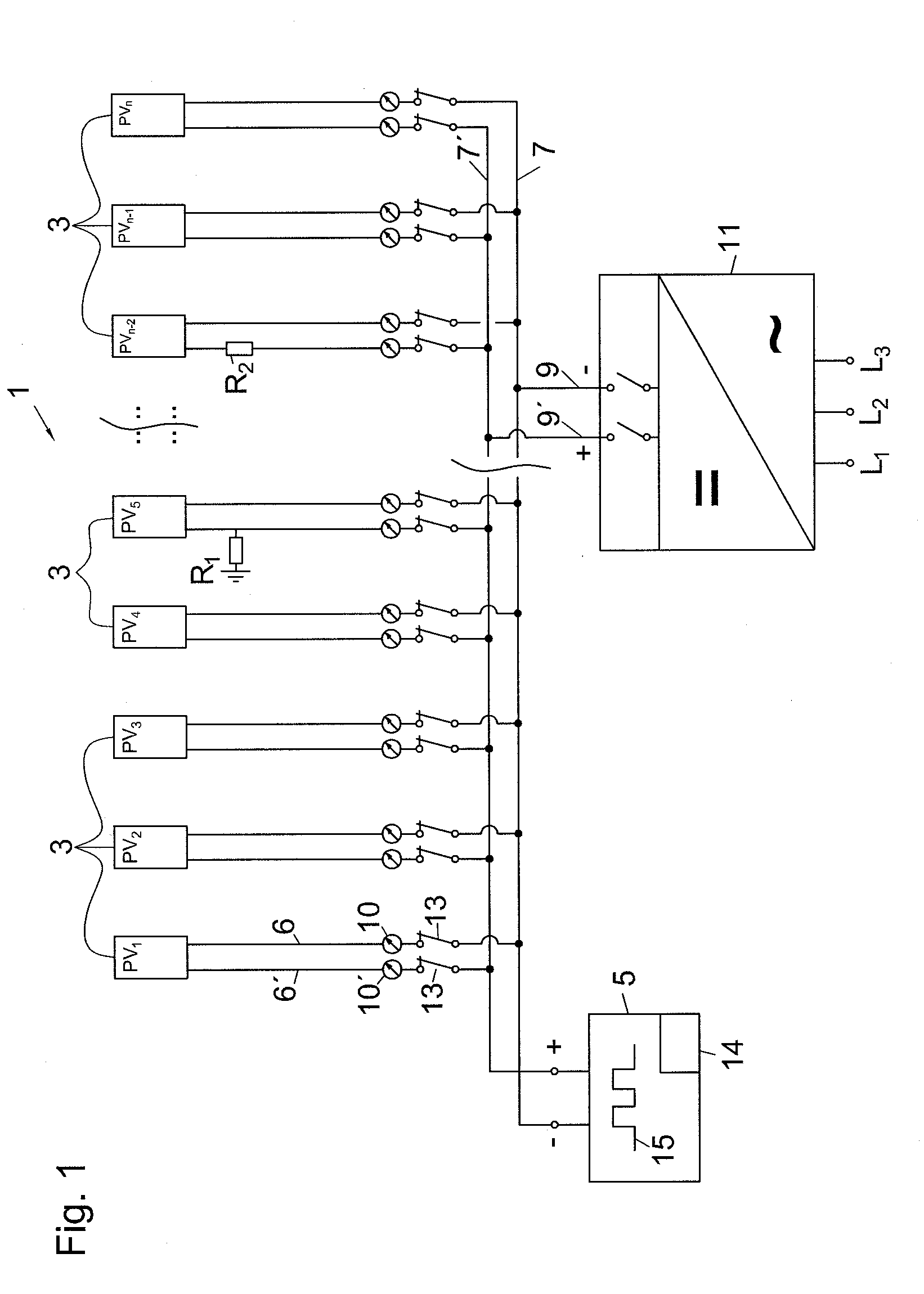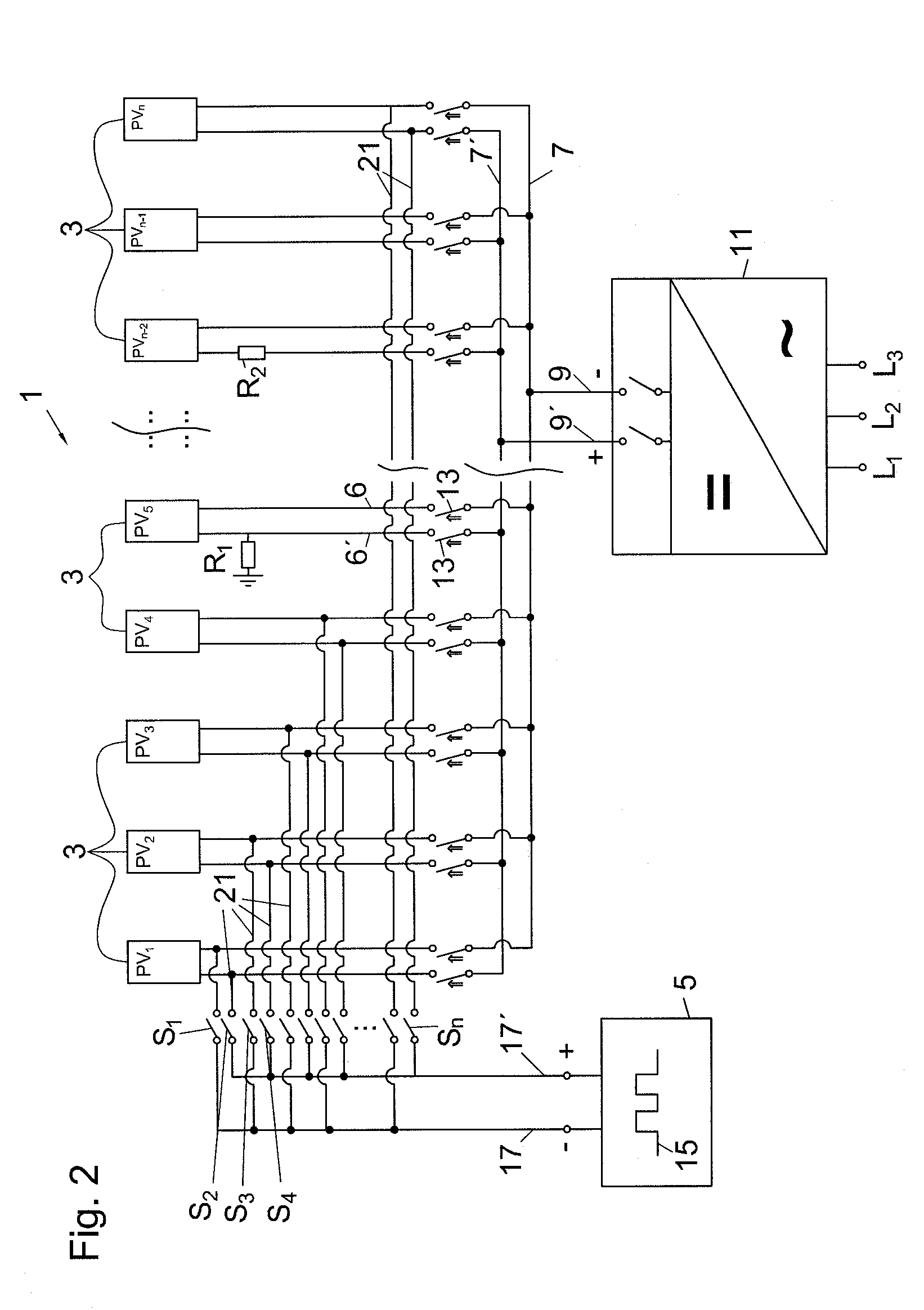Insulation test method for large-scale photovoltaic systems
- Summary
- Abstract
- Description
- Claims
- Application Information
AI Technical Summary
Benefits of technology
Problems solved by technology
Method used
Image
Examples
first embodiment
[0026]This is permitted by the instant first embodiment in that the insulation monitor 5 transmits its test pulse 15 directly to the bus bars 7,7′ without needing to have actuated the disconnect switches 13. For example, this can be done at night, when no solar-generated voltage is present. With suitably high-resistance insulation of the insulation monitor 5, the test pulse 15 can also be modulated onto the bus bars 7,7′ in the daytime during ongoing operation of the photovoltaic system 1.
[0027]If the feed lines 6,6′ to all subsystems 3, as well as the subsystems 3 themselves, are in a properly insulated state, then the test pulse 15 transmitted on the positive bus bar 7′ would be distributed more or less uniformly over the subsystems 3 in accordance with the particular line lengths present, and the ammeters 10′ would indicate approximately the same value. The ammeters 10 measuring the return current likewise indicate the same current value except for the damping losses that are to ...
second embodiment
[0030]In the invention shown in FIG. 2, the insulation monitor 5 transmits the test pulse 15 on two test pulse bus bars 17,17′, whence it can be switched according to the invention by means of two or more two-pole switches S onto connecting lines 21,21′, also referred to below in connection with FIG. 3 as stub lines 21,21′, each of which terminates in associated feed lines 6,6′.
[0031]If the first subsystem PV1 is to be tested for insulation weaknesses, then all other switches S2 to Sn of the subsystems PV2 to PVn are opened, and only the switch S1, which connects the feed lines 6,6′ of the first subsystem PV1 to the test pulse bus bars 17,17′, is closed. In this way it is made possible, even for the large-scale system 1, to test the insulation with a conventional insulation monitor 5 in the accustomed manner.
[0032]In this way, all subsystems PVn are gradually connected to the insulation monitor 5, by the means that only the relevant switch S that is associated with the subsystem PV ...
PUM
 Login to View More
Login to View More Abstract
Description
Claims
Application Information
 Login to View More
Login to View More - R&D
- Intellectual Property
- Life Sciences
- Materials
- Tech Scout
- Unparalleled Data Quality
- Higher Quality Content
- 60% Fewer Hallucinations
Browse by: Latest US Patents, China's latest patents, Technical Efficacy Thesaurus, Application Domain, Technology Topic, Popular Technical Reports.
© 2025 PatSnap. All rights reserved.Legal|Privacy policy|Modern Slavery Act Transparency Statement|Sitemap|About US| Contact US: help@patsnap.com



